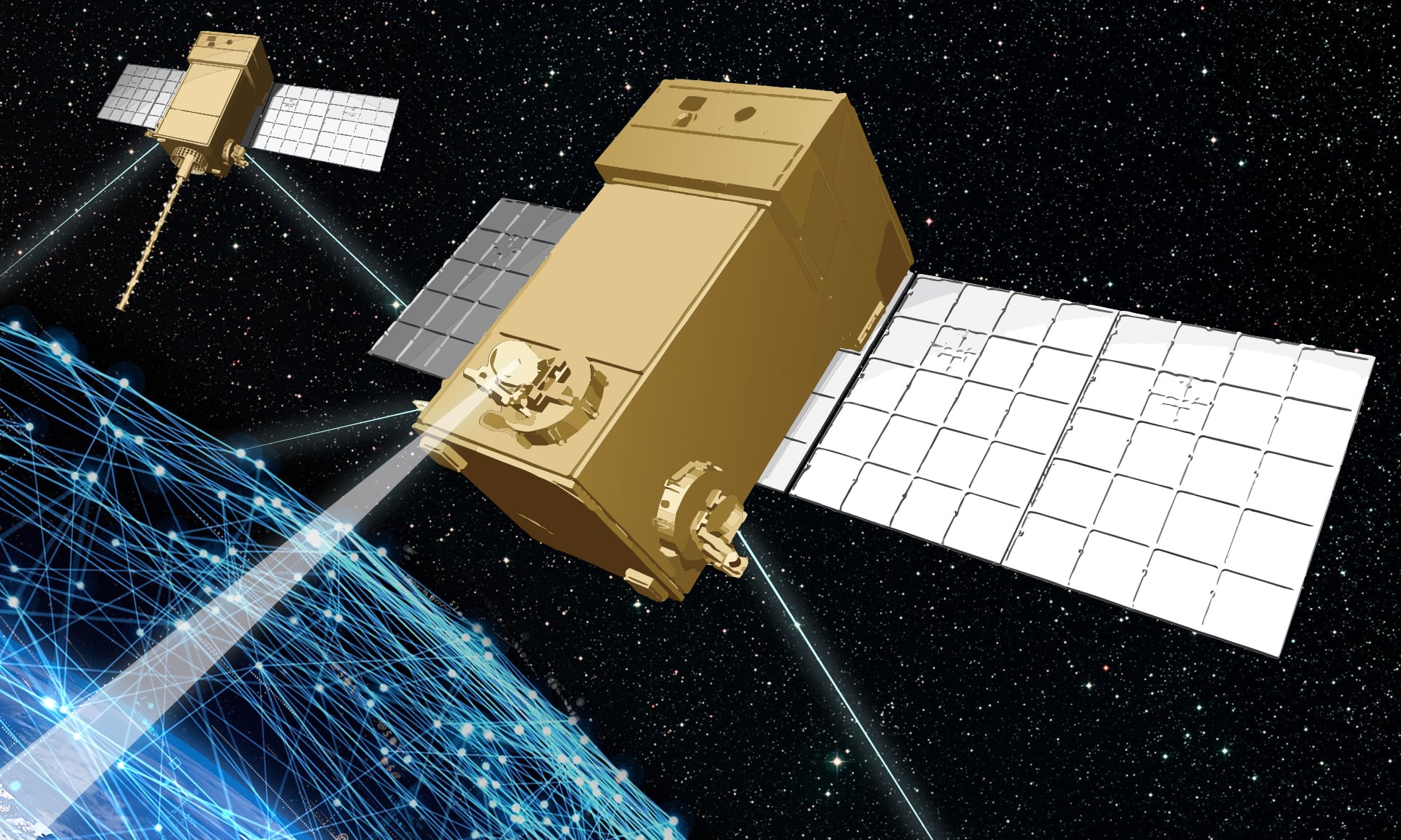WASHINGTON — Following protests filed with a government watchdog, the Space Development Agency is abandoning traditional Department of Defense contracting in favor of other transaction authority, a more flexible contracting method used for prototyping that has become popular with the military.
At issue are 144 satellites the agency wants industry to build for its National Defense Space Architecture, a proliferated constellation to be made up of hundreds of satellites in low Earth orbit. The satellites are meant to expand the so-called Transport Layer, a mesh network composed of satellites connected by optical links on orbit that can rapidly move data from space sensors to any location on the planet.
SDA issued a request for proposals for the satellites in August, with submissions due by Oct. 8. That same day, satellite operator Maxar Technologies filed a protest with the Government Accountability Office. While SDA wouldn’t comment on the substance of the protest, Director Derek Tournear said there was an appearance the agency favored a certain size or type of company over others.
“We want to avoid even any perception that [the Tranche 1 Transport Layer] competition is limited in any way. And because of that, we’re going to cancel that initial RFP, the RFP that closed on Oct. 8, and we will reissue our solicitation shortly that will be based on other transaction authority that will allow us more flexibility and the ability to remove clauses in question that gave this appearance of limitation,” said Tournear.
Because the OTA process is more streamlined than traditional contracting, Tournear said the move will have a limited impact on the agency’s schedule while giving it more flexibility in selecting the best contractor. Awards could be issued a month later than expected, but the satellites are still expected to launch in 2024, he said.
Tournear said his agency has struggled to convince industry it will be able to avoid vendor lock, something that has plagued Department of Defense space programs for years. In that environment, there is an expectation that whoever wins the initial contract will win all subsequent contracts, ensuring a long-term stream of revenue for the company while locking out everyone else.
Tournear has repeatedly said SDA will do things differently. The agency is building the National Defense Space Architecture in two year tranches, basically building out and replenishing the constellation with new contracts every two years. According to Tournear, the agency will hold full and open competitions for the next tranche of satellites every two years with a goal of avoiding vendor lock.
Despite that messaging, Tournear said industry was acting on the old way of doing things, where the failure to win an early contract meant they were shut out from future competition.
“That mentality pervades some of the industrial base and we’re trying to shift them, but I can understand that hesitation,” he said. “Until we actually demonstrate that through multiple acquisitions, I think you’re always going to have this mentality that people are going to want to ensure that they can fight as hard as they can to get an early award.”
In response to SDA’s decision to reissue the solicitation through an OTA, the Government Accountability Office dismissed the protest.
This isn’t the first protest SDA has faced. After the agency issued two contracts for its first batch of missile warning satellites in 2020, two companies filed protests with the GAO. SDA opted to reevaluate its decision making process in response, ultimately confirming the original awards.
SDA said the new solicitation would be issued shortly.
Nathan Strout covers space, unmanned and intelligence systems for C4ISRNET.







